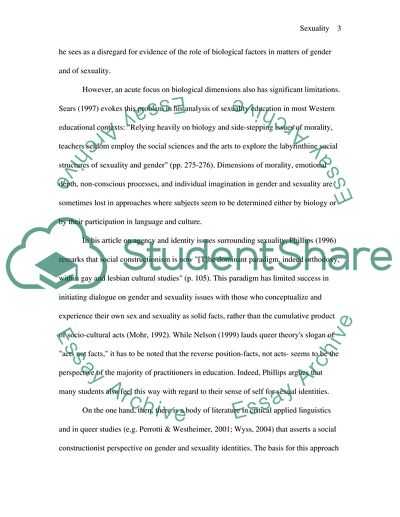Cite this document
(The Issues of Sexual Identity Research Paper Example | Topics and Well Written Essays - 2750 words - 1, n.d.)
The Issues of Sexual Identity Research Paper Example | Topics and Well Written Essays - 2750 words - 1. Retrieved from https://studentshare.org/gender-sexual-studies/1751034-sexuality
The Issues of Sexual Identity Research Paper Example | Topics and Well Written Essays - 2750 words - 1. Retrieved from https://studentshare.org/gender-sexual-studies/1751034-sexuality
(The Issues of Sexual Identity Research Paper Example | Topics and Well Written Essays - 2750 Words - 1)
The Issues of Sexual Identity Research Paper Example | Topics and Well Written Essays - 2750 Words - 1. https://studentshare.org/gender-sexual-studies/1751034-sexuality.
The Issues of Sexual Identity Research Paper Example | Topics and Well Written Essays - 2750 Words - 1. https://studentshare.org/gender-sexual-studies/1751034-sexuality.
“The Issues of Sexual Identity Research Paper Example | Topics and Well Written Essays - 2750 Words - 1”, n.d. https://studentshare.org/gender-sexual-studies/1751034-sexuality.


